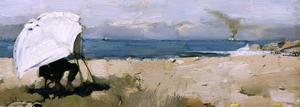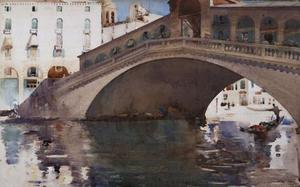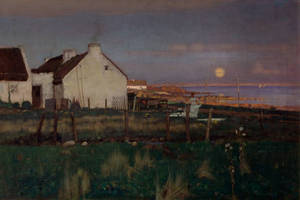Recent news from Scotland’s Kelvingrove Art Gallery and Museum amazes me, and maybe says something positive about the public and museums.
 Located in Glasgow, Kelvingrove underwent a remake a few years ago and turned itself into Scotland’s most popular “attraction,” now luring more visitors every year than even Edinburgh Castle.
Located in Glasgow, Kelvingrove underwent a remake a few years ago and turned itself into Scotland’s most popular “attraction,” now luring more visitors every year than even Edinburgh Castle.
But at what price? This is a combination art and natural history museum, and among its treasures are works by Titian, Rembrandt, Botticelli and van Gogh. Unfortunately, they are not what the museum sells — look at “highlights” on its website, or read the Gallery Information for Visitors — there’s no mention of them, except for a gallery called “Investigating Rembrandt,” which explores not the artist, or his work, but his subject. Kelvingrove, which I visited in 2007, is a Disneyland museum, offering the most dumbed-down exhibits and trite labels for art that I have ever seen. In 2008, a critic for the Guardian called it “a museum of nothing: just random stuff, repackaged for the little dears.”
 But from Apr. 9 through Sept. 27, Kelvingrove mounted an exhibition calles Pioneering Painters: The Glasgow Boys 1880-1900, about 100 paintings and 50 works on paper by the likes of James Guthrie (detail of his Hard At It is above left), Edward Atkinson Hornel, Sir John Lavery, George Henry, Joseph Crawhall, Arthur Melville (his Bridge Over the Rialto is at right) and James Nairn (his Auchenhew, Arran is below). It’s very tame work, hardly the sort of pizazzy pictures likely to draw people used to being entertained by art. Though Kelvingrove is free, it charged admission, £5 for adults, for this show, which the Daily Telegraph described it this way:
But from Apr. 9 through Sept. 27, Kelvingrove mounted an exhibition calles Pioneering Painters: The Glasgow Boys 1880-1900, about 100 paintings and 50 works on paper by the likes of James Guthrie (detail of his Hard At It is above left), Edward Atkinson Hornel, Sir John Lavery, George Henry, Joseph Crawhall, Arthur Melville (his Bridge Over the Rialto is at right) and James Nairn (his Auchenhew, Arran is below). It’s very tame work, hardly the sort of pizazzy pictures likely to draw people used to being entertained by art. Though Kelvingrove is free, it charged admission, £5 for adults, for this show, which the Daily Telegraph described it this way:
The exhibition looks at how Scottish painting emerged from a world of dark, heavily varnished Victorian historical narrative and sentimentality (disparagingly referred to as “glue-pot” art) into a bright new age of open-air painting and contemporary realism.
And guess what? The public got it. The exhibition drew 120,000 visitors, smashing Kelvingrove’s previous record of 103,000 for a van Gogh show in 1948. That’s not a typo.
 Could it be that Kelvingrove is underestimating its audience? Might it be that the publicity halo remaining from the renovation, or the suspense of the annual contest with the castle, or added marketing, etc. have been drawing people — not the entertainment features of the new Kelvingrove? When I was there, it was the central cafe, the downstairs store, and the natural history sections populated by children that were full…and loud. To some extent, those things have driven away people like that Guardian critic. Might they have returned for the Glasgow Boys?
Could it be that Kelvingrove is underestimating its audience? Might it be that the publicity halo remaining from the renovation, or the suspense of the annual contest with the castle, or added marketing, etc. have been drawing people — not the entertainment features of the new Kelvingrove? When I was there, it was the central cafe, the downstairs store, and the natural history sections populated by children that were full…and loud. To some extent, those things have driven away people like that Guardian critic. Might they have returned for the Glasgow Boys?
This matters because some museum experts hold Kelvingrove up as a model to follow. So let’s have more serious art exhibits at the Kelvingrove, and see what happens.
Meantime, the Glasgow Boys show has moved to the Royal Academy in London, where it opens on Saturday.
And their paintings, according to the Telegraph article, are attracting big prices in the galleries, if not at auction.
Photo Credits: Courtesy of Kelvingrove (top); The Telegraph (middle); the Royal Academy (bottom)
